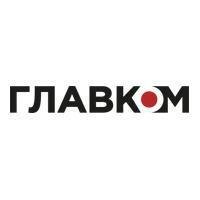The Houthis won’t stop attacking ships in the Red Sea, and new evidence shows Iran doesn’t really want them to. After many warnings to stop, the United States and United Kingdom started launching airstrikes on Houthi targets in Yemen on Jan. 11. However, the Houthis remain undeterred from the attacks, and on Thursday, Jan. 24, they attacked two U.S.-flagged ships.
The ships were carrying cargo for the U.S. Defense Department and the State Department. Houthis launched three anti-ship missiles, but like most of their other attacks, the U.S. Navy took out the threats with ease and the third fell harmlessly into the water.
The Houthis started this most recent waves of attacks on ships in the Red Sea after the war in Gaza broke out. Houthis are an Iranian-backed terror group and came to power in Yemen in 2014.
Iran supplies the Houthis with almost all of their weaponry. Everything from rifles and RPGs to rockets, missiles and drones. Iran routinely uses smugglers to transfer weapons to the Houthis. One recent operation to stop the transfer of arms to Yemen from Iran resulted in two U.S. Navy Seals being lost at sea.
However, the seizure did provide evidence Iran is sending its proxy in Yemen more advanced weaponry.
One analyst told the Wall Street Journal the Houthis now have the most lethal, long-range strike capabilities of any Iranian terror proxy, and that Tehran is essentially using the Houthis to test new weapons against Western targets.
There’s also evidence Houthi engineers are passing designs up the food chain as the terrorist organization and its benefactors learn and adapt their tactics based on the growing number of encounters with the U.S. and U.K. militaries.
Iran also sent advisers from its Revolutionary Guard Corps and Hezbollah, another of its terror proxies in Lebanon, to help the Houthis in their efforts to attack ships in the Red Sea.
In the coming weeks, those advisers may be teaching the Houthis how to use a spate of new unmanned aerial vehicles. Iranian state television aired video showing delivery of a fleet of new UAVs. The domestically produced drones are said to be capable of performing different sorts of missions, from intelligence gathering to counter electronic warfare, and of course, combat.
Chief Commander of the Army Maj. Gen. Abdolrahim Mousavi said the drones are also upgraded with the latest “self-protection, navigation and smart precision-strike systems.” He said the new drones will “definitely improve the combat power of the Army’s four branches.”
And if recent history holds true, that means the Houthis’ combat power is also going to be improved.
For their part, the U.S. and U.K. said their militaries will keep hitting Houthi launch sites and weapons caches, but it’s clear those strikes aren’t stopping the attacks.
U.S. National Security adviser Jake Sullivan is set to meet with China’s foreign minister to discuss the strikes on shipping lanes in the Red Sea. There are concerns the conflict could kick off a wider, regional war. Which could explain why neither the U.S. nor the U.K. are targeting the weapons suppliers, Iran, instead of the low level users, the Houthis.












































































































![TASS [🇷🇺-affiliated] logo](https://groundnews.b-cdn.net/interests/1c364c1e553231a17f22d4a16db85a51fb715dd3.jpg)




![Russia Today [🇷🇺-affiliated] logo](https://groundnews.b-cdn.net/interests/d3a6b2444d4740f3e75a430e54a0cb4d24ee6cc6.jpg)



![RIA Novosti [🇷🇺-affiliated] logo](https://groundnews.b-cdn.net/interests/2a0109015009cf4c268971a719f58598126b4051.jpg)


























![Sputnik Globe [🇷🇺-affiliated] logo](https://groundnews.b-cdn.net/interests/e68d7b37f05a67679cc6152365afdd6e33dafdc1.jpg)






























![Lenta.RU [🇷🇺-affiliated] logo](https://groundnews.b-cdn.net/interests/54d337f93d4216c40f0bbf0a3a7b46c926c46551.jpg)






































